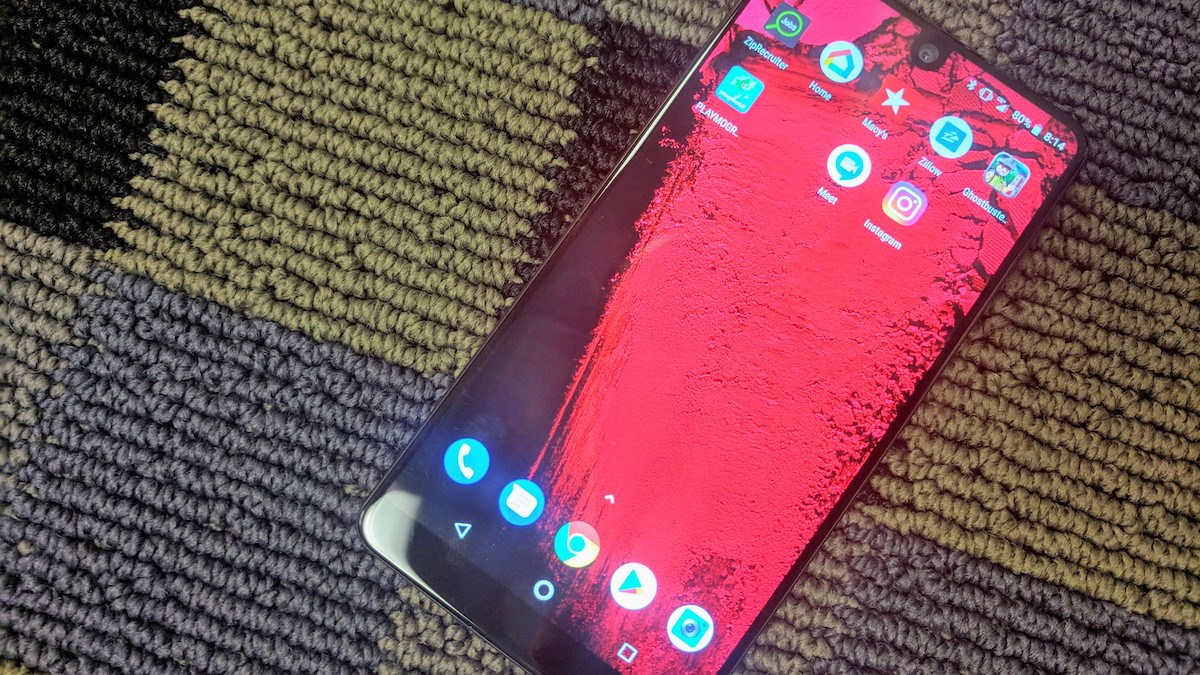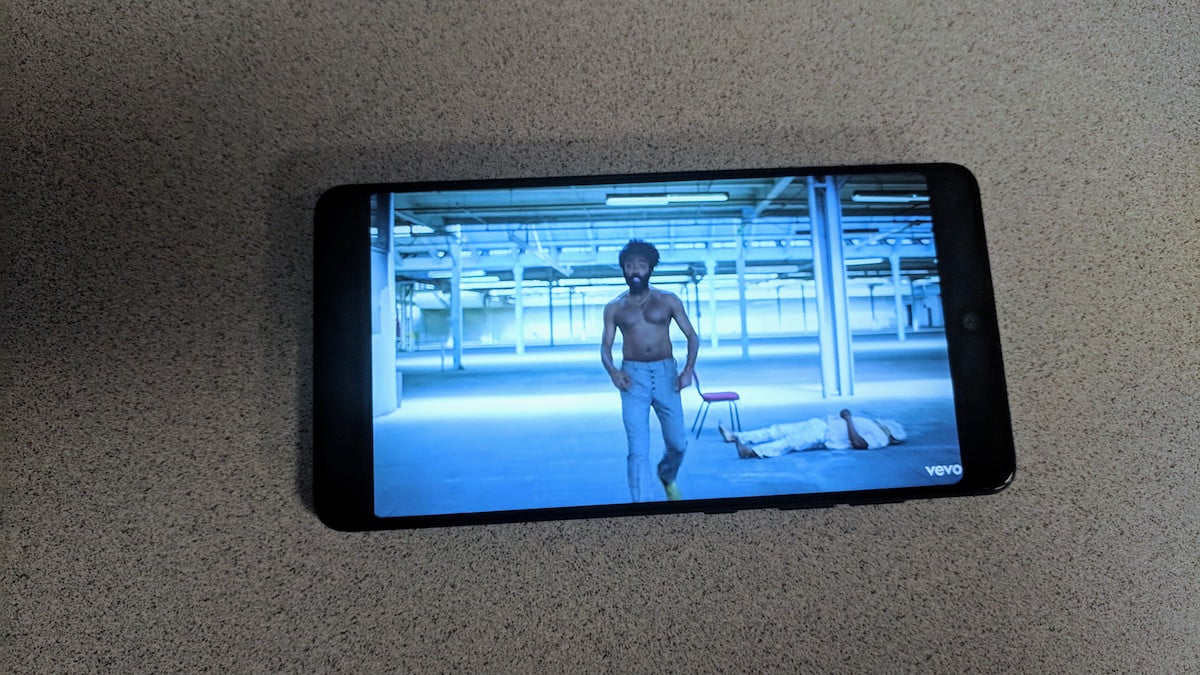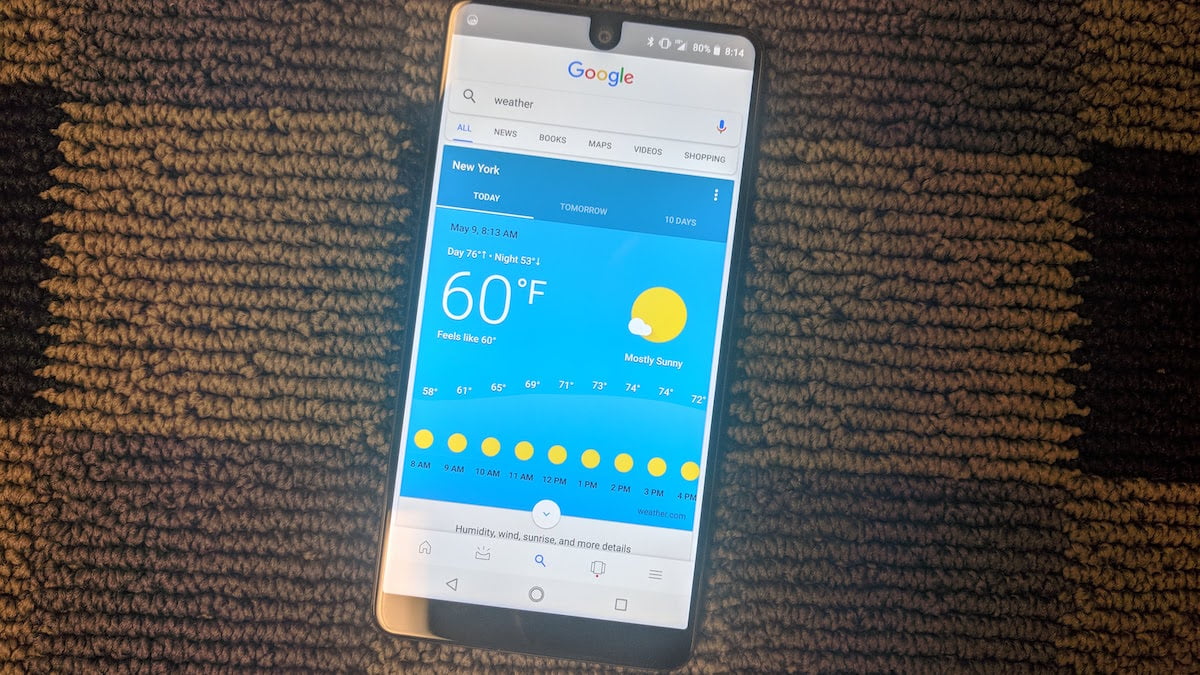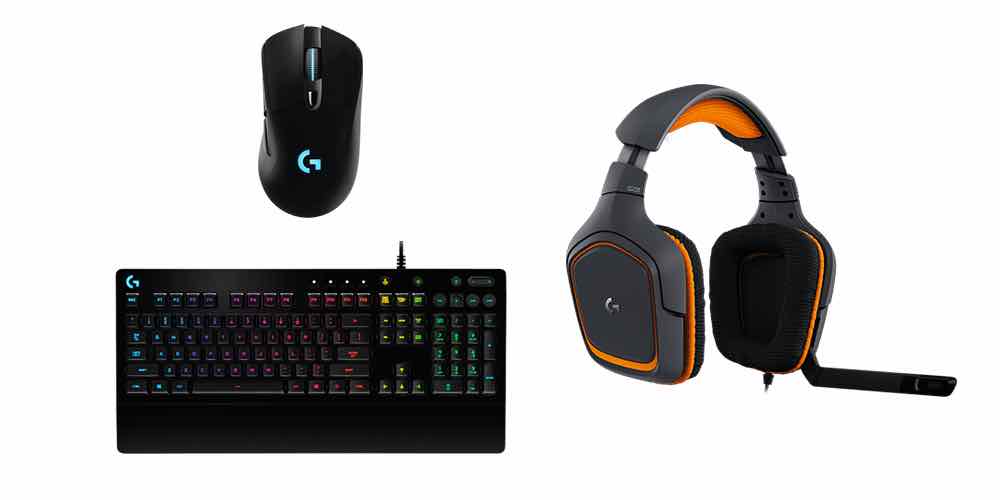
As one can tell from my reviews here, I like smartphones. Always have—I’ve been using them since before the iPhone existed. I get excited when I hear of something new and different in the smartphone arena.
The Essential Phone is just such a device. Yet several months in, few seem excited. What’s up with that?
Essential Phone Hardware
The Essential Phone presents right away as a high-end phone. You have a body that is a blend of titanium, ceramics, and glass (and available in four colors—we have the Black Moon). This gives it a very nice heft. It feels cool in the hand.
The Snapdragon 835 chip under the hood is powerful and what you’d expect on a flagship phone. With 128 GB of storage and 4 GB of RAM, you have lots of room for apps and the overhead to run them in. At least, it had better be enough storage; Essential decided there was no need for a MicroSD slot.
There’s also no headphone jack (Essential includes an adapter). There is, however, a USB-C fast charging port, plus “accessory pins” for attaching external devices. At this writing, the only accessory that uses this is a 360-degree camera. We’ll get back to that later.
As with any phone, the centerpiece of the Essential is the screen. The 5.7″ screen is excellent, with a 2560×1312 resolution and 505 pixels per inch. Colors are dead-on accurate. An edge-to-edge display, there’s a slight bezel on the bottom and a notch on the top. Love them or hate them, notches are the trend for late 2017 and early 2018. I don’t see them going away so soon. The notch is very subtle, and most apps ignore it.

The Essential phone has a very responsive rear fingerprint scanner that can also be used to pull the notification shade up or down. Great functionality that I’ve seen on other phones. I just wish I could also use it to launch apps like I could on the Honor 8x.
With so much cutting-edge tech on the Essential, I do have to ding it for two features. Not having wireless charging is forgivable I suppose. That’s still a niche product (hopefully Apple adopting the Qi standard will help). But only having IP54 water resistance is a bit on the baffling side. Every other flagship phone is ready for a dunking. At IP54 you can whip your phone out in a light drizzle for a second, but I don’t recommend trying to text in a rainstorm.
It has to be noted that the Essential Phone has zero branding on it. All you see on the back is the aforementioned fingerprint readers, accessory pins, cameras, and flash (more on those below). You can also see your reflection in it. It’s stark, lovely, and different. Which will not matter because you are going to put this in a case. Yes, ceramic and titanium are tough, but this is a slippery phone with lots of glass. Use protection.

Software of the Essential Phone
That no branding I mentioned? It extends to the software. The Essential is pure Android, with no skinning. This makes sense, considering Essential was founded by Andy Rubin, one of the co-founders of Android. He has enough faith in the OS to let it speak for itself. Which it does, loud and clear. Keep in mind that not even Google offers stock Android on their Pixel phones. As such, the Essential is Android in the purest form. Using the Essential is like using a classic Nexus.
The Essential updates like a Nexus did too, with a constant stream of them. OS updates are guaranteed for two years, which is how it should be. I’m running Oreo on the Essential and it runs like a champ—the May update rolled out quickly and smoothly on 5/8.
Notifications make perfect use of the notched top screen, so you never really miss the screen real estate.

Sadly, there is one software area where the Essential takes a swift kick to the head. Keep reading.
Camera
The cameras on the Essential are technically great. The front camera is a trustworthy 8 MP selfie-shooter that can shoot 4K video if needed. The rear pair is a dual 13 MP set with lots of bells and whistles. Yet all it takes is a few days’ shooting with the Essential to realize something—the photos just straight up look worse than with other phones.
I have to note that this is something Essential has been working hard on. Update after update has been pushed out for the camera. It’s now usable for the casual shooter. Power photographers though are not going to want this. Even I had some issues where I had to reshoot simple photographs. It’s possible that the camera may improve even more (three updates were pushed out in the time it took me to write this review), but that’s a bet you’ll have to make.
Below, find a gallery of photos taken with the Essential.
One option is to install a 3rd party camera. The Pixel camera has been ported to the Essential by modders and it’s supposed to work like a charm. I’m staying out of that mess (for now).
As for the 360-degree camera? It’s a cute gimmick with little purpose that sucks down battery life like there’s no tomorrow. Hard, hard pass, especially for an extra $99. I would be interested in seeing someone else make use of the accessory ports for something useful, though.
Experience
Using the Essential as a daily driver was a comfortable experience. The phone itself has all the right hardware and the software is perfect for me. I’ve had some issues with notifications, specifically from Facebook. That’s resulted in better productivity for me in general, so not complaining too much.
Battery life is… slightly better than okay. The Essential’s 3040 mAh is a fine size for a battery. It’s just that I have seen bigger. One nice thing about stock Android though, is it sips the battery a drop less. Not as much going on.
The biggest issue for me is network connectivity. It has been confirmed via multiple online sources that while the Essential is an unlocked phone that should work on any U.S. network, it simply does not have good reception on T-Mobile. This has been a bit frustrating, especially since it does so many other things right… but it needs more. Which I fear may be the Essential’s epitaph.
Verdict
Essential had a really cool concept, which they rushed to market. At a result, people ended up with a phone that looked and felt amazing, but was in many ways half-baked.
At the original pricing, I would not be able to recommend the Essential. However, Essential has since dropped the price by over $200. You can get it for $489 from Amazon or as low as $450 from Best Buy if you activate then (it’s an extra $50 to buy without activating). Amazon even had it down to $400 for a 48-hour flash sale.
Once you get below $400, the Essential becomes a lot more tempting. You’re getting flagship features at midrange prices. You just have to be sure you’ll be okay with the camera being a work in progress (or needing hacking), and not be on T-Mobile. You can arguably find cheaper phones, but they will all have bloat and may not update in a timely fashion (think security, people).
If you want an Android phone that will have on-time updates and looks stylish, then the Essential is your only option outside of the Pixel family, and it’s a lot more affordable and better looking.
Personally, the best part of the Essential is seeing how close they came to making a perfect Android phone for me. I eagerly await to see what the Essential Phone 2 is like. In the meantime, I am very happy to have the Essential as my daily phone.
Note: Essential provided me with an Essential Phone and an Essential 360 camera for review.



